Typical Japanese Dishes and foods.
Typical Japanese food and popular Japanese dishes.
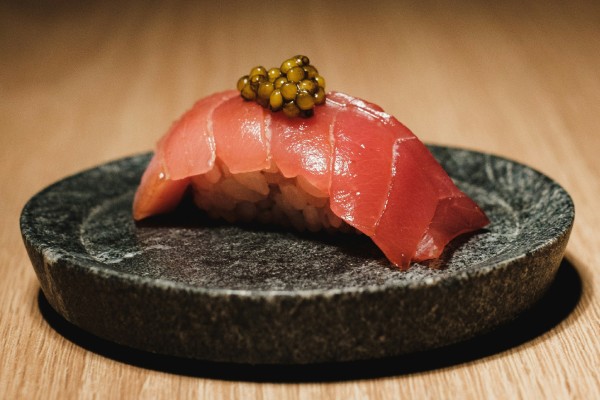
Onigiri (Rice Balls)
Just as sandwiches are considered Britain's original portable food, onigiri can be called Japan's original portable food. Also known as "omusubi" or "nigirimeshi," onigiri are rice balls shaped into triangles or rounds and wrapped in nori (seaweed), typically with a filling inside. While onigiri have been enjoyed in Japan for hundreds of years, nowadays they can be found in Japanese convenience stores for about 100-150 yen each. Popular fillings include umeboshi (pickled plum), kombu (kelp), tuna with mayonnaise, and tarako (cod roe).
Miso Soup
Miso soup is an essential part of daily meals in Japan, consumed more frequently than any other dish. Made by combining miso paste with dashi stock, it's served at breakfast, lunch, and dinner, as well as in Japanese restaurants. The soup combines the umami of dashi with miso's distinctive flavor, and includes ingredients like green onions, wakame seaweed, and tofu. This nutritious and delicious soup remains popular today.
Tofu
In Western countries, tofu is often associated with health food and vegetarian meat alternatives. However, in Japan and other Southeast Asian countries, tofu is widely enjoyed by everyone and is commonly eaten as part of everyday meals. Tofu is made by adding a coagulant to soy milk, and comes in different textures like silken tofu and firm tofu. It's a healthy and versatile food that can be eaten in many ways - chilled as hiyayakko, added to hot pot dishes, or deep-fried as agedashi tofu.
Sashimi
Sashimi is one of the most commonly eaten Japanese dishes. It consists of thinly sliced raw fish or meat, typically eaten with wasabi, soy sauce, and salt. The fish used for sashimi must be extremely fresh to ensure the best taste.
Sushi
When people think of Japanese food, sushi often comes to mind first. It was one of the first Japanese foods exported to America after the Meiji Restoration in 1868, and its popularity has grown worldwide ever since. "Sushi" refers to dishes made with vinegared rice, and includes varieties like maki (rolls), nigiri (hand-pressed), and inari (stuffed tofu pouches).
Ramen
Ramen is a noodle dish consisting of wheat noodles (also called "chuka men"), flavorful broth (with four main bases: soy sauce, salt, miso, and tonkotsu pork bone), char siu (roasted pork), nori, green onions, bamboo shoots, boiled eggs, and other toppings. It's one of the most popular foods in modern Japan and can be enjoyed inexpensively at ramen shops and Chinese restaurants. The popularity of ramen in Japan is so high that there are even ramen museums and theme parks in the Tokyo area.
Udon
One of Japan's three major noodle types, udon are thick, chewy noodles made from wheat flour and kansui (alkaline water). While they can be stir-fried, added to hot pot dishes, or served cold with dipping sauce, they're most commonly served in a hot dashi-based soup with various ingredients. Popular varieties include kitsune udon (with fried tofu), tempura udon, and chikara udon.
Soba
Soba is one of Japan's three major noodle types, frequently consumed throughout the country. Unlike udon and ramen, soba noodles are made from buckwheat flour, giving them a distinctive aroma and flavor. They can be served in hot dashi-based soup or cold with dipping sauce, accompanied by green onions, shredded nori, and wasabi. Various toppings like tempura, green onions, mountain vegetables, and grated yam allow for different taste experiences.
Tempura
For those who love crispy fried foods, tempura is a perfect choice. It consists of ingredients like shrimp, squid, pumpkin, sweet potato, green peppers, and eggplant dipped in batter and fried until crispy. It's eaten with tempura dipping sauce containing grated daikon radish, salt, or yuzu kosho (citrus chili paste). It's also served over udon or soba noodles, or on rice as tempura donburi.
Yakitori
While British people might snack on potato chips or hot dogs while watching sports, many Japanese people enjoy yakitori with beer. Yakitori consists of bite-sized pieces of chicken and green onions skewered on bamboo sticks and grilled over charcoal, seasoned with either salt or tare sauce. There are many varieties of yakitori, including "tori momo" (chicken thigh), "negima" (chicken and green onion), and "tsukune" (chicken meatballs).
Donburi
Donburi dishes are popular in Japan and commonly eaten during lunch breaks by busy Japanese workers. There are many varieties, including katsudon (breaded pork cutlet simmered with egg), tendon (tempura), and gyudon (sweet and savory simmered beef and onions over rice).
Sukiyaki
Like oden, sukiyaki is a hot pot dish often eaten during cold winter months. It's prepared by first grilling green onions and beef in a sukiyaki pot, then adding sukiyaki sauce and simmering with vegetables like Chinese cabbage, shiitake mushrooms, carrots, chrysanthemum greens, and shirataki noodles. The name "sukiyaki" means "cook what you like," reflecting how people can cook their preferred ingredients together at the table.
Shabu-shabu
Shabu-shabu is a hot pot dish similar to sukiyaki, where vegetables and tofu are simmered in a flavorful kombu dashi broth. Thin slices of meat are briefly swished (typically 10-20 seconds) in the hot broth and eaten with ponzu or sesame sauce along with the vegetables. The name "shabu-shabu" comes from the sound of washing cloths that a waitress was making in the kitchen when the dish's creator was thinking of a name.
Unagi no Kabayaki
Unagi no kabayaki (grilled eel) has been popular since the Edo period (1603-1868) when people ate it in summer for stamina. It consists of prepared eel fillets grilled with a sweet and savory soy-based sauce. If you visit Japan in summer, try this aromatic, energy-boosting dish.
Oden
Perfect for cold Japanese winters, oden is a simmered dish containing various ingredients like daikon radish, potatoes, chikuwa fish cake, gobo maki (burdock root rolls), hanpen fish cake, mochi kinchaku (fried tofu pouches with mochi), boiled eggs, and konnyaku in a light soy sauce and dashi broth. Eaten with mustard or other condiments, hot oden warms both body and soul when shared with others.
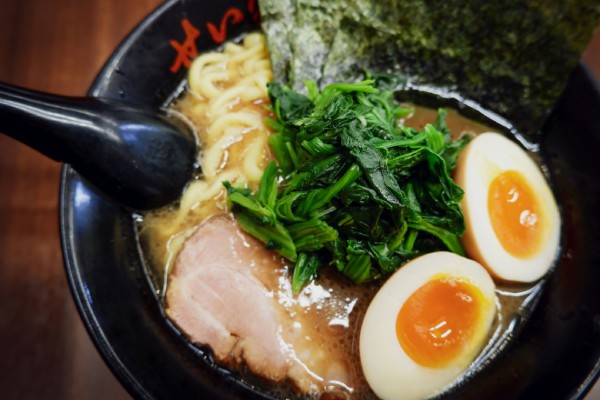
Tamagoyaki
Tamagoyaki is a rolled omelette made with beaten eggs (sometimes seasoned with soy sauce or sugar) cooked in a special rectangular pan. Quick to prepare, this sweet and fluffy egg dish is eaten at any meal, in bento boxes, and as a sushi topping. It's loved by people of all ages.
Tonkatsu
Tonkatsu is a Western-influenced dish that was adapted by Japanese chefs for Japanese tastes. Modern tonkatsu consists of breaded pork cutlets fried until golden brown, served with tonkatsu sauce and shredded cabbage. It's also popular in bento boxes, curry dishes, and sandwiches.
Okonomiyaki
Okonomiyaki is a savory pancake made with a dashi-flavored batter mixed with shredded cabbage, tempura bits, and green onions, cooked on a hot plate or griddle. Originating in Osaka and Hiroshima, it has spread throughout Japan with many specialized restaurants. Some restaurants let customers cook their own okonomiyaki for a fun dining experience.
Takoyaki
Takoyaki is one of Japan's most famous street foods. These octopus-filled balls are cooked in special takoyaki pans and rotated with skewers until crispy outside. They're topped with takoyaki sauce, mayonnaise, aonori seaweed, and bonito flakes, creating a crispy exterior with a fluffy interior.
Yakisoba
You'll always find yakisoba stands at Japanese summer festivals. This stir-fried noodle dish combines noodles, cabbage, bean sprouts, carrots, and pork with yakisoba sauce. While it's often prepared on large griddles at festival stalls, home cooks use large frying pans or woks. Despite its name, yakisoba noodles are made from wheat flour, not buckwheat like soba noodles.
Nikujaga
Nikujaga is a hearty "nimono" (simmered dish) combining meat, potatoes, onions, and shirataki noodles cooked in a mixture of soy sauce, sake, mirin, and sugar. The recipe varies by household and region, with pork more common in Kanto and beef in Kansai.
Curry Rice
Japanese curry was introduced from Britain during the Meiji period (1868-1912). Unlike Indian curry popular in Britain, Japanese curry is typically sweeter and thicker, prepared more like a stew. It's often made using curry roux blocks, resulting in a thick, flavorful sauce.
Gyoza
Gyoza are dumplings filled with a flavorful mixture of ground pork, cabbage, green onions, and shiitake mushrooms, seasoned with garlic, ginger, and soy sauce, wrapped in thin dough and pleated into crescents. They can be pan-fried, boiled, or deep-fried, and are also enjoyed in soups and hot pots.
Edamame
While British pubs serve peanuts or pork scratchings with lager, Japanese izakaya typically serve edamame. These immature soybeans are usually boiled and lightly salted, served as a beer snack. Rich in protein, iron, and calcium, edamame is a healthy appetizer commonly found in izakaya.
Chawanmushi
Chawanmushi is a uniquely Japanese dish with a smooth, gentle texture. It's a savory custard made by steaming dashi-seasoned beaten eggs with chicken, shiitake mushrooms, ginkgo nuts, and kamaboko fish cake until it reaches a pudding-like consistency. The name literally means "steamed in a tea bowl."
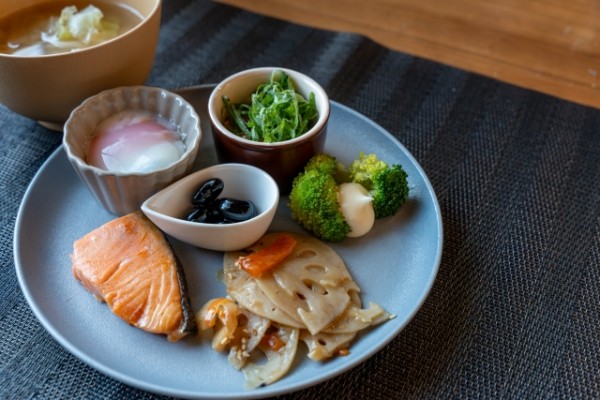
Traditional Japanese cuisine: Kaiseki cuisine
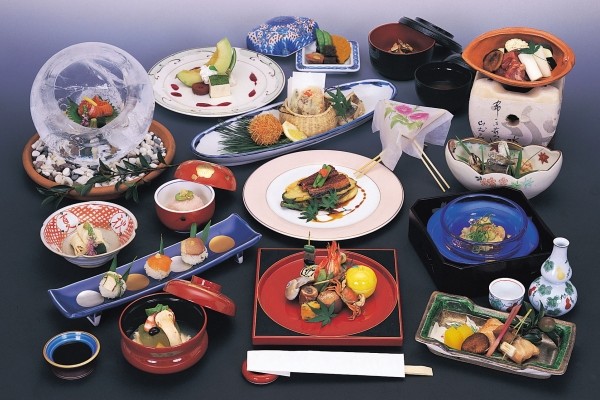
If you want to experience high-end Japanese cuisine, try kaiseki ryori (kaiseki cuisine). Also simply called "kaiseki," it is a traditional Japanese multi-course meal. Kaiseki cuisine (懐石料理 or 会席料理) is a traditional Japanese multi-course meal that emphasizes seasonality, aesthetics, and refined techniques. It originated from the tea ceremony, where small, artfully prepared dishes were served to complement matcha. Using fresh seasonal and local ingredients, each dish is prepared in small portions to bring out the natural flavors of the ingredients, with a single kaiseki meal consisting of up to a dozen or more different dishes. Kaiseki showcases various cooking techniques and can be enjoyed in traditional Japanese restaurants (ryotei) or in the tatami rooms of ryokan (traditional Japanese inns).
Kaiseki is often enjoyed at high-end ryotei or in omakase-style dining, where the chef curates the menu based on the freshest seasonal ingredients available. It is considered the pinnacle of Japanese fine dining, reflecting deep cultural traditions and meticulous craftsmanship.
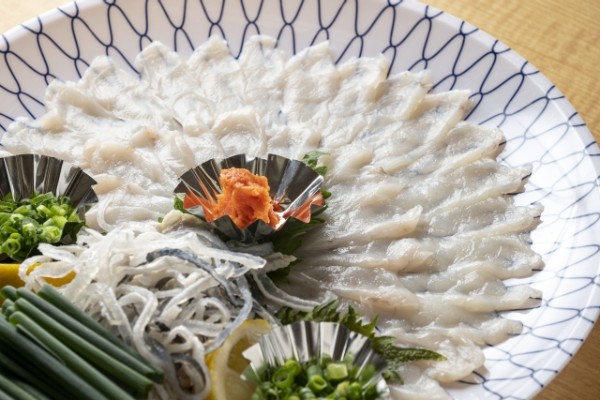
Fugu (Pufferfish, blowfish)
This is perhaps the most famous Japanese delicacy, and also one of the most dangerous. Fugu contains a potent toxin, and it can only be prepared by licensed chefs who have undergone rigorous training. When prepared correctly, it is said to have a delicate and subtle flavor.
Uni (Sea Urchin)
Uni is the gonads of a sea urchin. It has a rich, creamy texture and a briny, slightly sweet flavor. It is often served raw as sushi or sashimi.
Ikura (Salmon Roe)
These small, bright orange eggs are a popular topping for sushi and rice bowls. They have a salty, slightly fishy flavor and a unique popping texture.
Shirako (Cod Milt)
This is the sperm sacs of a male cod. It has a creamy, almost custard-like texture and a mild, slightly sweet flavor. It is often served in winter as a delicacy.
Natto (Fermented Soybeans)
This is a traditional Japanese food made from fermented soybeans. It has a sticky, slimy texture and a strong, pungent odor that many people find off-putting. However, it is also considered to be very healthy and is a staple of the Japanese diet.
Mochi
Mochi is a traditional Japanese rice cake made from glutinous rice. The rice is pounded into a paste and then molded into various shapes. It has a chewy, sticky texture and a slightly sweet flavor. Mochi is a versatile food that can be used in both sweet and savory dishes. It's often eaten during special occasions and festivals, especially New Year's.
Natto
Natto is a traditional Japanese food made from fermented soybeans. It has a distinct smell and texture and has been described as having a nutty flavor. Natto is stringy, sticky, and one of the few processed foods where the whole soybean retains its shape and mouthfeel. Natto is a food that divides opinions even among Japanese people. This traditional Japanese food, rich in natto bacteria, activates beneficial bacteria and helps improve gut health. While many people dislike natto's distinctive smell and sticky texture, its natural deliciousness and status as a healthy, nutritious food means it continues to be consumed by many people today.
Mentaiko (Spicy Cod Roe)
For those who love salty and spicy seafood, mentaiko is an irresistible delicacy. It's made by marinating walleye pollack or cod roe in various seasonings that provide saltiness, umami, and spiciness. While the basic version is simply salt-cured tarako (cod roe), the spicy variant called "karashi mentaiko," which is marinated with chili pepper, is also very popular. The most common way to eat mentaiko is as a side dish with rice or as a filling for onigiri (rice balls). Recently, mentaiko has also become extremely popular as a pasta sauce when mixed with butter and cream.
Japanese Sweets (Wagashi), which are perfect as desserts after Japanese meals or as accompaniments to tea, are said to have originated from ancient times when people gathered and ate nuts and fruits. During the Edo period, with the widespread availability of sugar, wagashi underwent significant development. Made with carefully selected ingredients such as mochi (rice cakes), anko (sweet bean paste), agar-agar, chestnuts, and sugar, representative wagashi include dango (sweet dumplings), daifuku (mochi filled with sweet bean paste), dorayaki (red bean pancake sandwich), and yokan (sweet bean jelly).
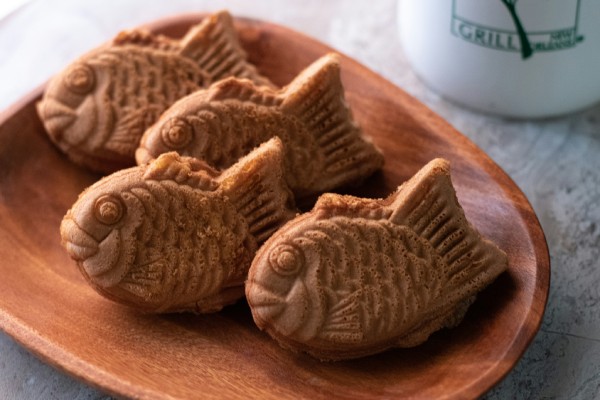
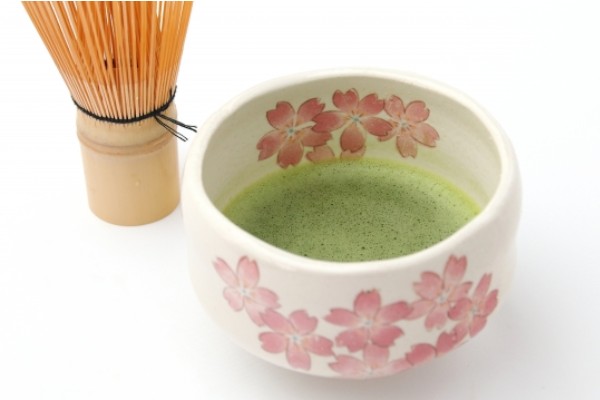
1. Ramen
A classic Japanese noodle dish with many varieties to choose from. You can enjoy various soup flavors such as soy sauce (shoyu), miso, salt (shio), and tonkotsu (pork bone broth). Each region has its own unique style of ramen, making it fun to try different versions.
2. Sushi
Nigiri sushi, made with fresh seafood, is a representative dish of Japanese food culture. You can enjoy it at various price points, from high-end sushi restaurants to conveyor belt sushi. Tuna, salmon, and sea urchin are especially popular among foreign tourists.
3. Tempura
The combination of crispy batter with seasonal vegetables and seafood is exquisite. Experience this unique Japanese fried dish served with tempura dipping sauce (tentsuyu) or dashi salt.
4. Okonomiyaki
A specialty dish from Osaka and Hiroshima. It's made by mixing cabbage, eggs, and meat into a batter, grilling it, and topping it with special sauce. It's also fun to watch the cooking process.
5. Udon
A noodle dish characterized by its chewy noodles and dashi broth combination. Different regions have their own styles, such as Sanuki udon. It can be enjoyed both hot and cold.
6. Matcha
Matcha is a type of Japanese green tea that comes in powder form. It's also used in various sweets, such as matcha lattes and matcha ice cream.
---------------------------------------------
These are just a few examples of Japanese Dishes and foods. In addition to these, tonkatsu (breaded pork cutlet), sukiyaki, and shabu-shabu are also popular among foreign tourists. It's also recommended to enjoy various Japanese dishes at izakaya (Japanese pubs) along with Japanese beer and sake. There are many other unique and interesting foods to discover in Japan, from rare seafood to unusual cuts of meat. Since each region has its own unique local dishes, try to sample local specialties depending on where you visit.
If you're feeling adventurous, be sure to try some of these on your next trip to Japan. Just be sure to do your research first, as some of them can be an acquired taste!
update